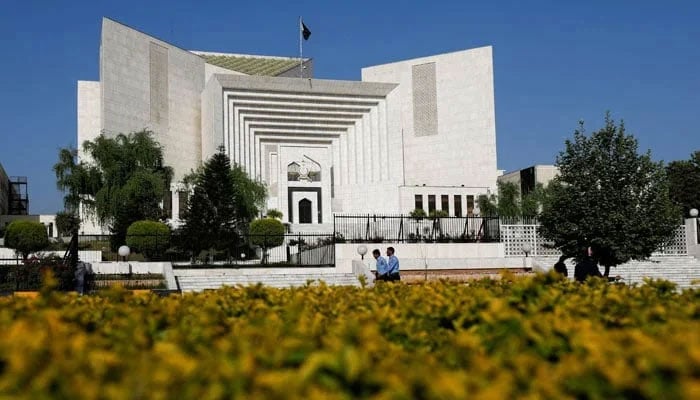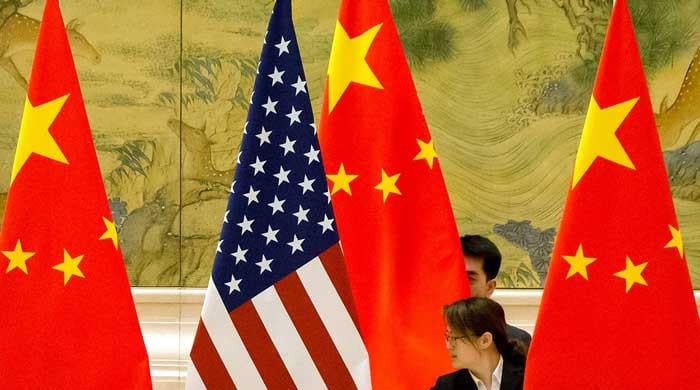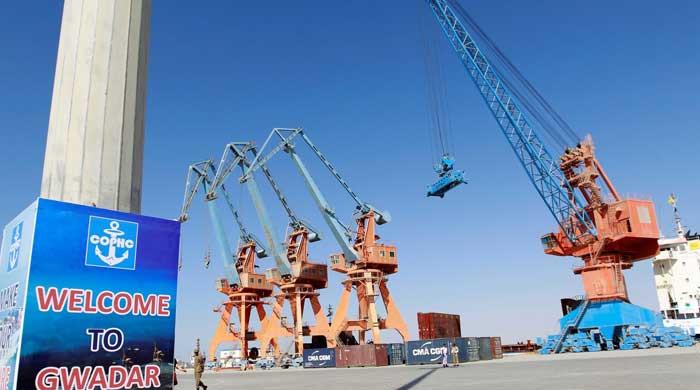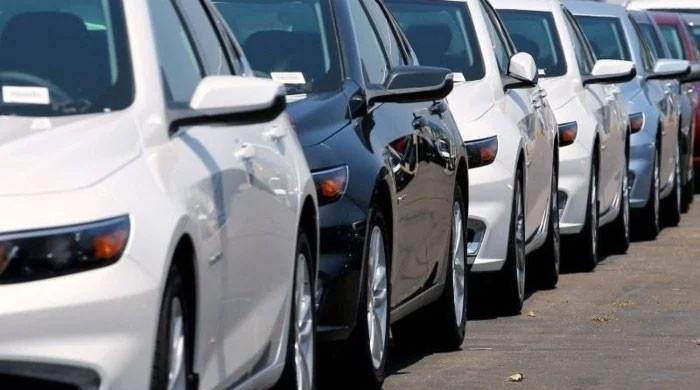Are more judges the answer?
This does not address the underlying factors that lead to the influx of cases
September 06, 2024

The 1950s were a golden era for the American automobile industry. The advent of new technologies, the maturation of mass production techniques and an increase in consumer purchasing power catapulted the automobile industry into the largest economic sector in the United States, dwarfing the rest of the world. The surge in car sales naturally led to increased traffic on the roads.
The obvious solution was to build wider, bigger, and better roads. Yet, this approach did little to alleviate congestion in the long run. Urban planning specialist Lewis Mumford, writing for The New Yorker, quipped, "Building more roads to prevent congestion is like a fat man loosening his belt to prevent obesity."
Belt-loosening seems to be the chosen course of action of the powers-that-be. Let us, for the moment, set aside the political argument of whether increasing the number of Supreme Court judges is an attempt at court stacking or a sincere attempt at improving the administration of justice, and consider the positive argument on its own merits.
To summarise, an increase in the SC's total strength will provide the SC with the manpower it needs to clear the case backlog. This way of thinking, and the solution that flows from it, fundamentally misunderstands the nature of the problem.
Consider the concept of induced demand. In the context of urban planning, adding more lanes to a highway does not reduce traffic in the long run because the increased capacity encourages more people to drive, thereby filling the new lanes.
The same principle applies to the judicial system. By increasing the number of judges, we might temporarily increase the court's capacity to dispose of cases, but this does not address the underlying factors that lead to the influx of cases.
In fact, it could lead to an increase in the number of cases filed, as litigants and lawyers become more inclined to appeal, knowing that the court has greater capacity. This, in turn, perpetuates the cycle of backlog rather than alleviating it.
To illustrate, let us consider the mathematics of the issue. The SC currently comprises 17 sitting justices, with two additional ad-hoc members appointed for a one-year term, bringing the total to 19.
The proposal to increase the strength of the SC would bring this number to 23. Assume, for the time being, that each additional judge operates at full efficiency from the get-go. Compared to a court that hasn't been increased in strength and hosts no ad-hoc appointees, that — generously — translates to a 35% increase in available manhours.
Let’s take it a step further and assume that the court will operate as it did in 2022, where it recorded its only pendency reduction. Assume also that there is no significant jump in the yearly institution of cases.
Applying that 35% increase to the pendency reduction from 2022, we arrive at the dismaying conclusion that — even if the proposal is applied and unrealistically favourable conditions follow — it would take something in the neighbourhood of 15 years to clear the backlog.
Whereas the napkin math itself should suffice as a counter to the proposal, reality is significantly bleaker.
The first problem with these assumptions is that the number of cases instituted each year has not remained constant. If anything, there’s been a catastrophic rise in cases instituted each year. In 2013, the SC reported that 12,223 cases were instituted. By 2018, this number had jumped to 19,390 — a 59% increase in case institutions per year.
The second problem is that such a change is vulnerable not only because it ignores passive annual growth, but because it induces demand. We can expect a surge in cases simply because of the perceived increased capacity of the SC to hear cases. Litigants and lawyers that once admitted defeat before the case went to the SC will, in all likelihood, be incentivised to attempt fixing their cases before the Court.
The issue lies not with the number of judges but with how the SC perceives itself in relation to the rest of the judicial system — as final arbiter for all manners of cases, rather than the body responsible for settling immense questions of law.
Far from taking inspiration from the supreme courts of the US and UK, there are — otherwise excellent — judges who dismiss these courts as incapable of putting in the "hard work" the Pakistani judiciary exhibits.
To them, the fact that the US Supreme Court hears an average of 75 cases a year (less than a percent of the applications it receives) is evidence of a lazy judiciary, rather than a system designed to resolve most issues at lower levels, allowing only the most pertinent legal questions to reach the Supreme Court.
Admittedly, the expansiveness of the judicial system below the American SC allows for a level of case filtration that may not be perfectly replicable in Pakistan, but opting to hear such a small percentage of applications remains an active decision, not a passive byproduct.
The vast majority of cases our SC hears fall under its appellate jurisdiction. We can further bifurcate those into two categories: those where an appeal of right is granted by the constitution, and those where the SC grants leave to appeal. The latter is where the problem in mindset most solidly manifests.
To put it simply, the SC should not be exercising its appellate jurisdiction as liberally as it does. It takes up far too many cases that revolve around factual disputes with little to no significant legal questions involved. This not only detracts from the court's primary function, it inadvertently allows litigants to wear the other party down in ever-increasing costs, delaying and frustrating the administration of justice, and contributes to the case backlog.
Some contend that the SC must continue granting leave to appeal to correct "bad law" at the high-court level. However, this reasoning is fundamentally flawed. Indeed, if we accept that the problem truly does lie with the high courts, the solution to such "bad law" is not to widen the proverbial road by adding more judges but to address the problem at the high-court level.
So, then, where do we go from here?
The path forward involves adopting comprehensive reforms that focus on the root causes of the backlog rather than merely treating the symptoms.
One such reform could involve revising the appellate process to ensure that the Supreme Court only takes up cases that present substantial questions of law. This would prevent the court from being overwhelmed by cases that do not require its intervention, allowing it to focus on those that truly warrant its attention.
Another solution lies in the introduction of an active case management system, akin to the one implemented by Lord Woolf, the former Lord Chief Justice of England and Wales. Under such a system, judges actively manage cases from their inception to ensure that they proceed in a timely and efficient manner.
This includes setting strict timelines for the submission of documents and hearing of cases, encouraging the use of alternative dispute resolution (ADR) methods, and ensuring that cases are adequately prepared before they reach the Supreme Court. To the SC's credit, it has indeed tried in recent years to promote ADR, with some degree of success.
The problem is frustrated further when the concept of in limine dismissal remains largely theoretical at all levels of the judiciary. If courts were more willing to dismiss cases at the preliminary stage when they clearly do not present a substantial question of law, the number of cases that proceed through the judicial system could be significantly reduced.
Finally, there should be clear consequences for frivolous litigation, enforced under equally clear criteria. Parties that repeatedly file baseless claims or appeals should face penalties, be it in the form of fines, or perhaps restrictions on their ability to bring future cases. Until we begin to discourage such litigation, the judiciary's resources will always be stretched thin.
Such proposals are, of-course, likely to face strong opposition from both the Bar and the Bench.
From the Bar's perspective, such reforms not only threaten their bottom line but also upset the very paradigm of legal action, where delaying the inevitable has a value of its own. By streamlining the process and dismissing cases early when they lack substantial legal merit, the opportunity for the "pay for interim relief" model of legal work diminishes.
Judges, like lawyers, have generally proven to be creatures of habit. Many judges, respectfully, find comfort in addressing routine cases that do not challenge their intellectual rigour, allowing them to exercise power through volume rather than depth.
Shifting the focus to resolving genuine legal questions would require a substantial shift in mindset and working methods. That, as the Pakistani public knows all too well, is not the judiciary's forte.
Juxtapose their concerns and interests with those 55,000 cases stuck in limbo, some with parties who have since passed on, and you will probably arrive at the only conclusion that makes sense. Instead of making space for more, maybe it's time we trimmed the fat and tightened the belt.
The writer is a student of law at King's College London. He can be reached at: [email protected]
Disclaimer: The viewpoints expressed in this piece are the writer's own and don't necessarily reflect Geo.tv's editorial policy.
Originally published in The News









